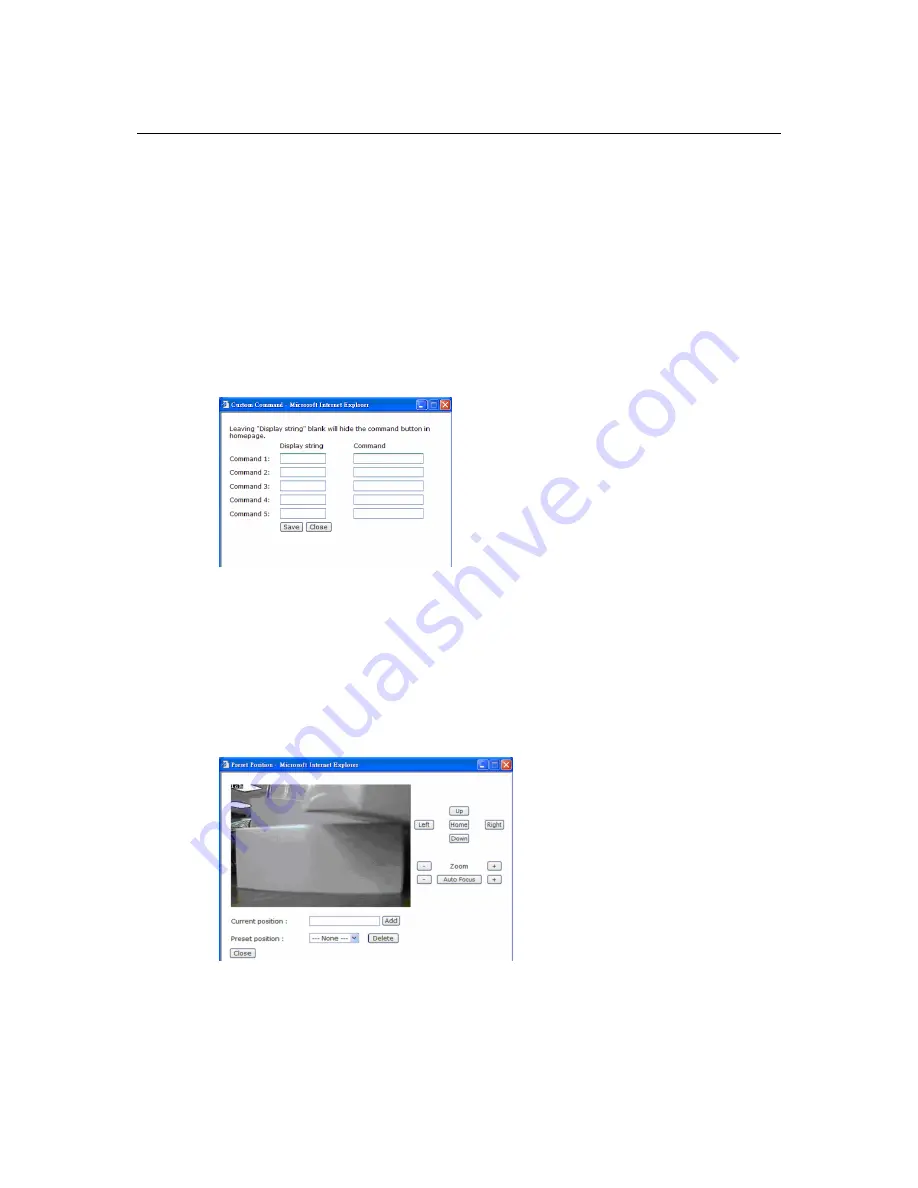
VPort 2110 User’s Manual
System Configuration
4-11
2.
If the attached device is not a PTZ camera, but another serial device, such as a video
multiplexer, etc., administrators can select the
Generic CGI command
to control the device
via CGI commands. For external device control, refer to Chapter 5,
Advanced Applications
,
under the
URL Commands for DI/DO and Camera’s Actions settings
section for more
details.
3.
The default setting is
None
, which means that no other device is connected to the COM port.
Port Settings
After selecting the correct PTZ driver or Generic CGI command option, the next thing
administrators must do is configure Port settings, including Baud rate, Data bits, Stop bits, and
Parity bit. If the attached device is a PTZ camera, refer to Appendix B,
Settings for Supported
PTZ Cameras,
for default settings of the supported PTZ cameras.
Custom command
VPort 2110 Video Server provides 5 custom commands in addition to the general pan, tilt, zoom,
and preset functions. Administrators can click on
Custom Command
to configure, and refer to the
manual enclosed with the attached PTZ camera to set up frequently-used functions. The Command
should be entered in ASCII format. The VPort will translate the commands into binary code and
send them out through the serial port. For instance, a text string of
8101ABCDEF
will be
translated into five bytes of hexadecimal
81
,
01
,
AB
,
CD
, and
EF
. The maximum length of a
command string is 60, which is equivalent to 30 hexadecimal bytes. The
Display string
is for the
text on the command buttons and should be less than 8 characters. If
Custom Camera
is selected,
there will be more commands for PTZF that relate to custom camera.
Preset Position
Administrators can use the
Preset Position
function to set up the behavior of the PTZ camera in
advance, and then users can directly move the camera’s lens to the preset position without the need
to control the pan, tilt, and zoom buttons.
















































